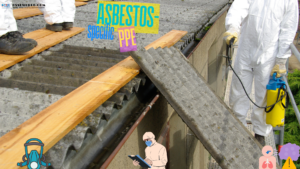Conduct a Proper Safety Audit
4 min readAccording to the most recent statistics from OSHA, 5,147 workers were killed on the job in 2017. And for each of these fatalities, there are many, many more work-related injuries.
Thankfully, the majority of these incidents can be mitigated or prevented by regularly conducting workplace safety audits.
What Is a Safety Audit?
A safety audit is a structured, methodical assessment and evaluation of how workplace activities affect safety and health. It helps organizations determine the success of their safety and health programs, environmental programs, and process safety management.


Safety audits, then, are kind of like financial audits – they evaluate compliance and performance.
Safety Audits Versus Safety Inspections
Safety audits differ from safety inspections in a few ways.
First, audits tend to be performed less frequently than inspections. Their aims are also different. Safety audits assess the organization’s overall compliance with regulations and policies. Safety inspections, on the other hand, are more localized and focus on one particular hazard or potential hazard.
Who performs each is also important. Safety audits are performed by third parties, such as auditors who are completely external to the organization. Safety inspections, on the other hand, are carried out by members of the organization’s own safety committee.
What Are the Benefits of Conducting Safety Audits?
The main benefit of regularly conducting safety audits in the workplace is that it assists in the continuous improvement of the organization’s health and safety procedures.
Safety audits can also:
- Identify risks in the workplace, as well as the levels of those risk
- Identify strengths and weaknesses in safety processes and procedures
- Reveal where and how to make recommend improvements
- Ensure that adequate resources are available to manage workplace health and safety, and that those resources are being used efficiently and effectively
- Assess whether safety processes and procedures are legally compliant
- Eliminate unsafe practices and hazards
(Learn about The Site Equipment and Tools Inspection Procedure.)
How to Conduct a Proper Safety Audit
There are six steps that are essential to the success and effectiveness of workplace safety audits.
Step 1: Prepare for the Audit
- Prior to conducting the safety audit, inform all managers and supervisors so that all of the necessary documents, records, and procedures will be readily available when the audit begins
- Review all past audits and corrective action recommendations, as well as the legal requirements and training requirements for the specific programs or areas to be audited
- Determine the scope of the audit
- Set a timeline for conducting the audit
Step 2: Initial Research and Fact-finding
- For team-based auditing, give assignments to each member of the team and clearly define the area they will be auditing to ensure that they gather all the applicable information
- Audits should be broken down into the following areas:
- Employee knowledge
- Written program review (to compare the company’s program to federal requirements for hazard identification, hazard control, record keeping, and employee training)
- Program administration (to check the implementation and management of specific program requirements)
- Record and document review (to check for missing or incomplete documents or records)
- Equipment and material (to determine their applicability in controlling hazards for the specific program)
- General area walkthrough
Step 3: Review the Findings
- Combine all data obtain to formulate a concise report. Emphasis should be placed on the following four basic questions:
- Does the program cover all regulatory and best industry practice requirements?
- Are the program requirements being met?
- Is there documented proof of compliance?
- Is employee training effective?
- Address each program requirement taking note of all deficiencies
Step 4: Make Recommendations Based on the Data Obtained
- For each deficiency noted, develop recommended actions
- Prioritize the risk controls using the hierarchy of hazard control
Step 5: Take Corrective Action
- Involve the managers and supervisors who will be responsible for executing the corrections
- Assign a completion and review date to all corrective actions to be implemented
- Set priorities based on level of hazard
- Review the records of completed corrective actions through the normal management chain and ensure that these records are filed for use during the next workplace safety audit
Step 6: Publish the Results
- Make the basic findings and recommendations of the safety audit available to all managers and supervisors
- It is also important to acknowledge those departments who are properly executing their responsibilities
The Bottom Line
Workplace safety audits seek to identify whether safety management systems are operating as they should. More often than not, workplace injuries and accidents are the outcomes of minor issues that could have been identified by conducting workplace safety audits. Therefore, proper auditing protects both employees and the organizations by reducing injuries and operating costs, which, in turn, increases productivity.



